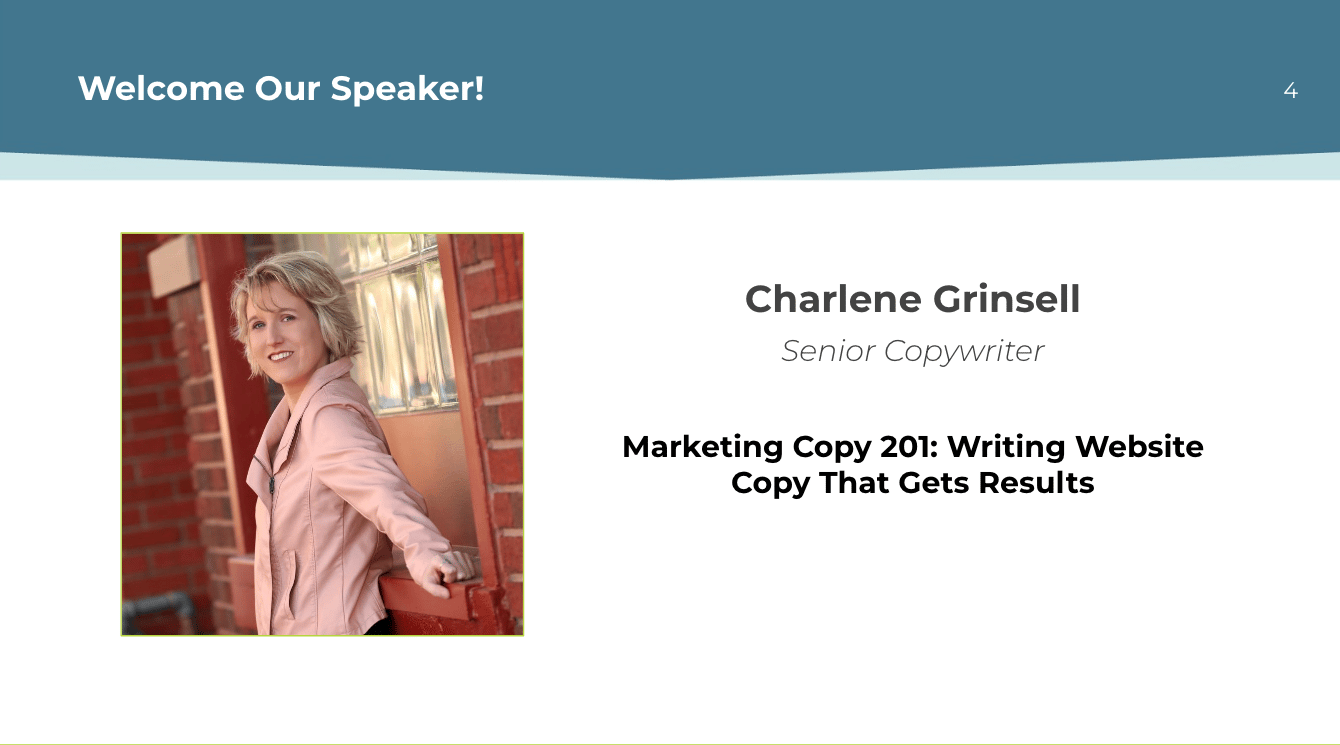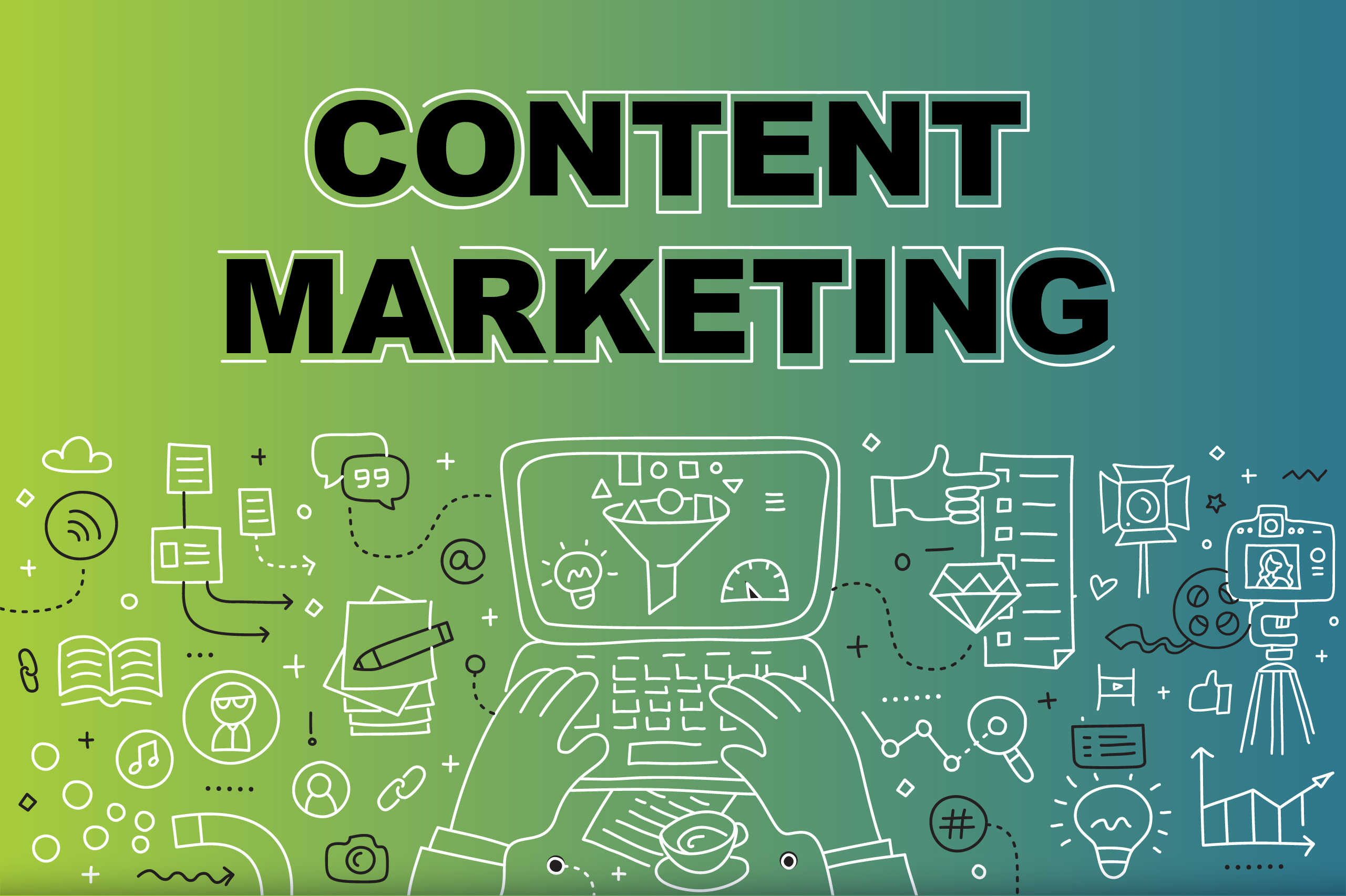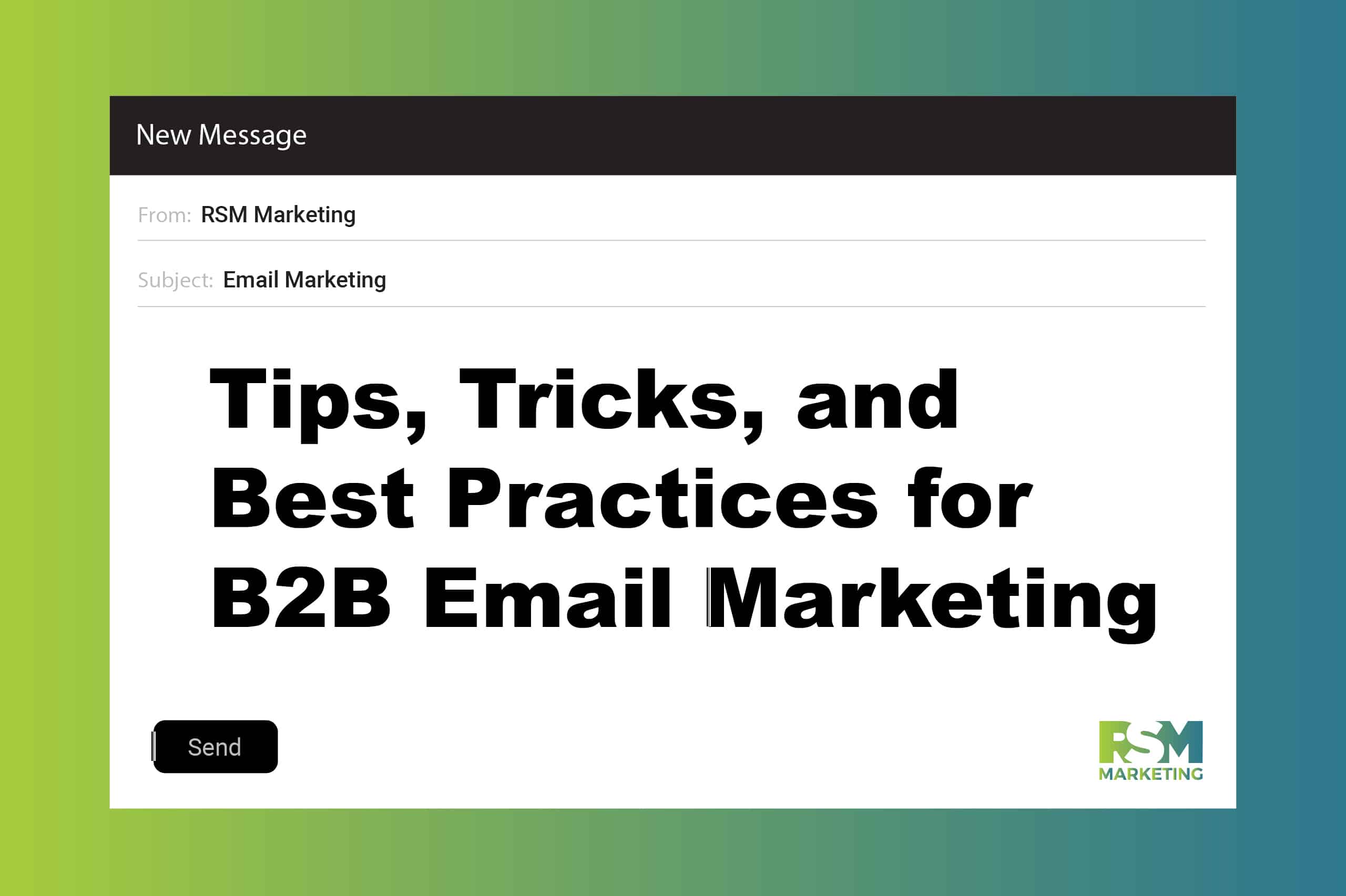Marketing Insights

In our latest RSM University Webinar, we were joined by Senior Copywriter Charlene Grinsell. Charlene is no stranger to RSM University, she spoke just a few months ago in her first session of this series with her presentation “Marketing Copy 101: Your English Teacher Would Hate This”.
If you didn’t attend that webinar, it’s suggested you read the recap blog for Marketing 101 as it lays a foundation for what Charlene talked about in Marketing Copy 201.
Main Points From the Webinar
Marketing Copy Should Follow the Buying Cycle
One of the most important things that Charlene mentioned in her presentation was the importance of modeling marketing copy along the buying cycle. The first step in this process is asking what role a specific page will play on your website. For example, someone who has never heard of your product or service before is going to need more information than someone who is on the fence about going through with a purchase.
Charlene broke down the buying cycle into three specific phases
- Awareness
- Consideration
- Action
Awareness: The awareness stage is meant to introduce your company’s brand and the solution it offers for a customer’s needs. This is also the area where initial education takes place, demonstration of the service, and social proof of your expertise. When applied, pages in this phase include long-form information copy, blogs, buying guides and case studies.
Consideration: The consideration page moves prospects along a decision path. In this area, it’s assumed someone has been introduced to your product or service but revisiting your site to learn more about a specific product. Pages in this phase will feature products and services for long decision cycles or complex services.
Action: The action phase is exactly what it sounds like, convincing prospects who have decided they want to buy your product or service to act now. Pages in this stage should be for short decision cycles and more straightforward offerings, unlike the consideration phase.
Charlene noted that while pages can play dual or sometimes even triple roles, it’s critical to write for the primary role a page will serve on your site.
Ask Yourself ‘What is My Motivation?”
This step brings you to two important questions—who is the page for? What do they want?
“As a (persona/job title) I want to (action) so that (result).”
“As a homeowner, I want to redo my old floors so that I’m not embarrassed when people come over.”
“As a young person in a tough economy, I want to learn job skills so I can have a steady well-paying job that lets me live comfortably.”
Why does this practice matter for web copywriting? It’s simple—people won’t take action if they feel the solution or product doesn’t apply to them or won’t meet their needs.
This seems like it would be a widely practiced process, but often writing can be mistranslated to the wrong audience. A manufacturer might write to what seems like a retail audience when really they need to write to a distributor. This is a prime example of why knowing your audience and your motivation behind writing is crucial to gaining the results you want.
This leads us to a common mistake that Charlene mentioned many people make, and that is telling people what they already know. While it’s great to offer in-depth information, it can turn people away from a purchase when they feel like they have to shuffle through information they already know to get to a purchase.
Writers love empathy and making the audience feel relatable, but when you spend too much time doing this, you can insult a prospect’s intelligence, and even sacrifice your own credibility.
Pay Attention to Your Prospect’s Intent
Learning how a prospect gets to your page can tell you what they’re looking for. If it was from a Google search, what were they searching for?
Google searches often reveal exactly what you need to know about a prospect. Did they arrive from a digital ad? What about the ad might have piqued their interest? Display ads indicate a matched interest, but they don’t necessarily mean the prospect knows everything about your brand.
Did they arrive from a direct link? Are they on your mailing list? This person likely knows plenty about your business but might need to be directed to the action phase of the buying cycle, as mentioned earlier.
Did they arrive on your page from navigation on your site? This person could be in the consideration process, looking for more information.
SEO Tells All
Any time you’re writing copy that will be viewed online, paying attention to Search Engine Optimization (SEO) is critical. Incorporating keywords into your copy can help it gain traction online. While Charlene touched on SEO, RSM Marketing offers plenty of resources for SEO education.
It’s also important to pay attention to your Meta titles and descriptions to ensure they describe exactly what your page will be about. One of our recent blogs is a great place to start if you want to familiarize yourself with SEO.
Join Us For Future RSM University Webinars
The knowledge doesn’t stop here. RSM University provides access to free information and education that can add value to your business. To learn about future events and sign-up to attend, visit our registration page.
Want Some Help?
That’s what we’re here for! Whether you need some guidance on moving in the right direction or a whole lot of marketing muscle—the experts at RSM Marketing can make it happen.
Start with a simple conversation! Complete the form and one of our team members will be in touch.




